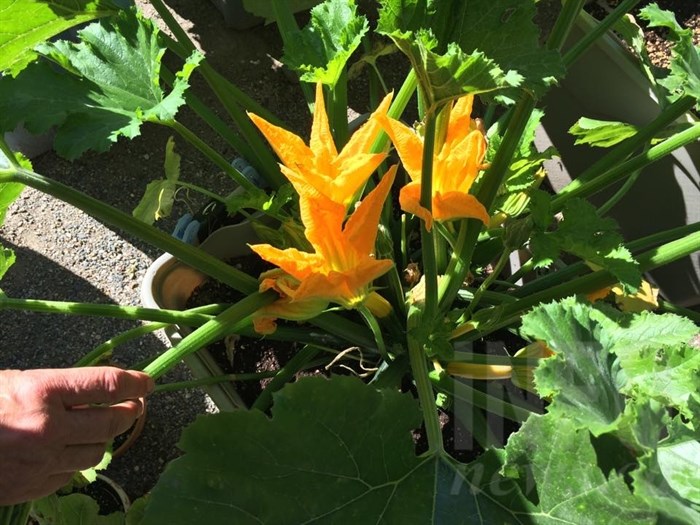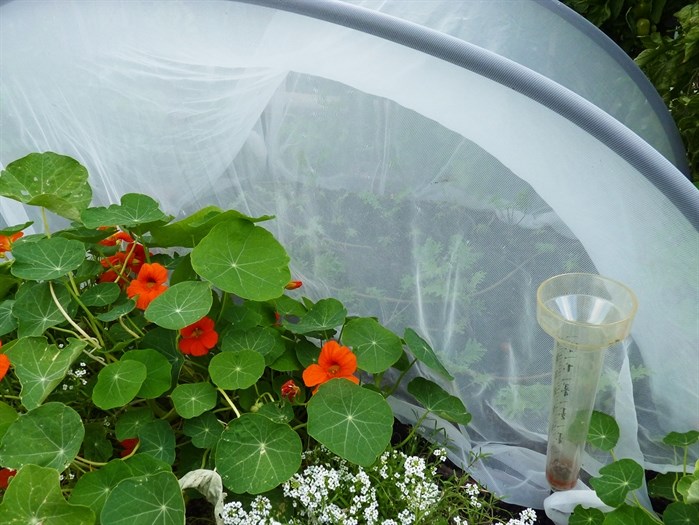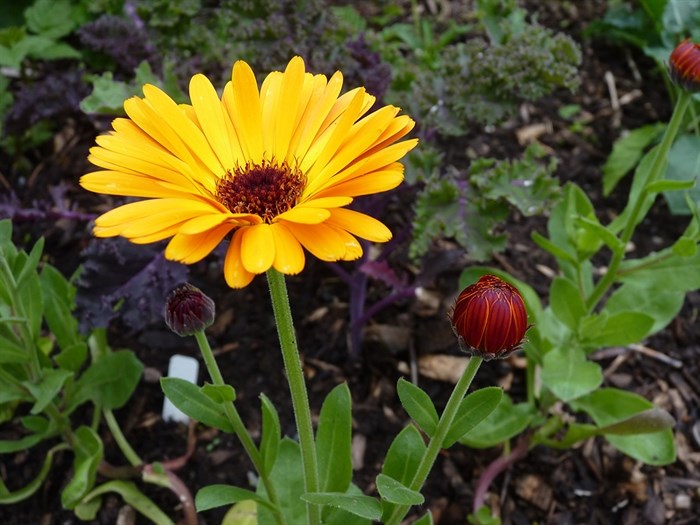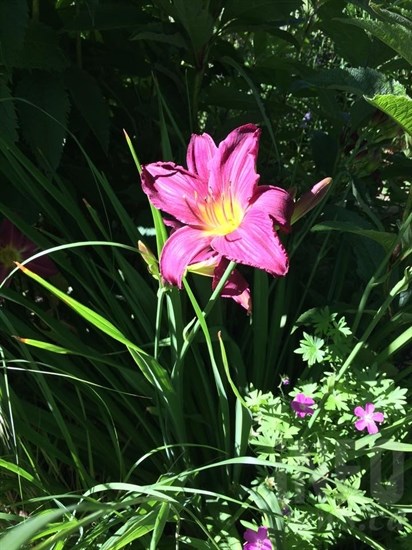
Squash blossoms from Elaine Sedgman's backyard garden.
(DANA REYNOLDS / iNFOnews.ca)
July 01, 2015 - 2:30 PM
'I DIDN'T KNOW I COULD EAT THAT'
KAMLOOPS – There is more to eat in your backyard garden than just vegetables.
Elaine Sedgman, of the Thompson Shuswap Master Gardeners Association of B.C., loves cooking with flowers because not only does it make food aesthetically pleasing but it’s experimental.
“When I have my grandkids here we often build salads. The kids will go out and pick flowers. It’s so much fun.”
Sedgman points out the edible flowers in her Sahali home garden and explains how to prepare them.
Squash Blossoms (Cucurbita) – Sedgman likes to dip the blossoms in batter – either a fried fish type batter or tempura – and deep fry them.
One important thing to note; the inner stem, called a pistil or stamen, must be removed before eating.
“I left the pistil in before I deep fried it and it was quite bitter,” Sedgman says. The inner stems are also common sources of allergens, not suitable for eating.
Nasturtium (Tropaeolum) – This small, colourful flower has a spicy or peppery taste to it, making it ideal to eat with a meat and potatoes type diner.
“Another thing you can add nasturtium to is salmon, as a nasturtium vinaigrette. But I think it’s just as good as a butter,” Sedgman says.

Nasturtium.
Image Credit: Elaine Sedgman
Calendula and Marigolds (Calendula; Tagetes) – While both are often called marigolds, they are two different flowers with two very different tastes.
A calendula can often be used as a (much less expensive) substitute for saffron. Sedgman likes to add it to rice and potatoes.
An actual marigold has a more savory flavour comparable to tarragon making it ideal, she says, to season poultry.

Calendula.
Image Credit: Elaine Sedgman
Pansies and violets (Viola tricolor; Viola) – Pansies have long been candied and used as cake decorations, but they are a very versatile flower.
Sedgman says she has even made a stuffed ravioli with “ricotta, chives, some breadcrumbs and pansies.”
The dark purple flowers show through the pasta adding a lot of colour to your plate.

Pansies.
Image Credit: Elaine Sedgman
Day Lilies (Hemerocallis) – An important caveat: lilies of the ‘day’ variety only as some other varieties can be toxic. This is easy to distinguish because, as the name suggests, this variety only lives for a day.
The leaves of the day lily taste like a green bean or eggplant. Dried petals are often used in Chinese style hot and sour soup.
Sedgman has been wanting to make a day lily potato pancake. The recipe calls for the lilies to be added to a collection of vegetables like onions, chives or even zucchini and pan fried on both sides.
“Topped with a hoisin sauce; that would be delicious,” she says.

Day lily also from Sedgman's garden.
(DANA REYNOLDS / iNFOnews.ca)
To contact a reporter for this story, email Dana Reynolds at dreynolds@infonews.ca or call 250-819-6089. To contact an editor, email mjones@infonews.ca or call 250-718-2724.
News from © iNFOnews, 2015